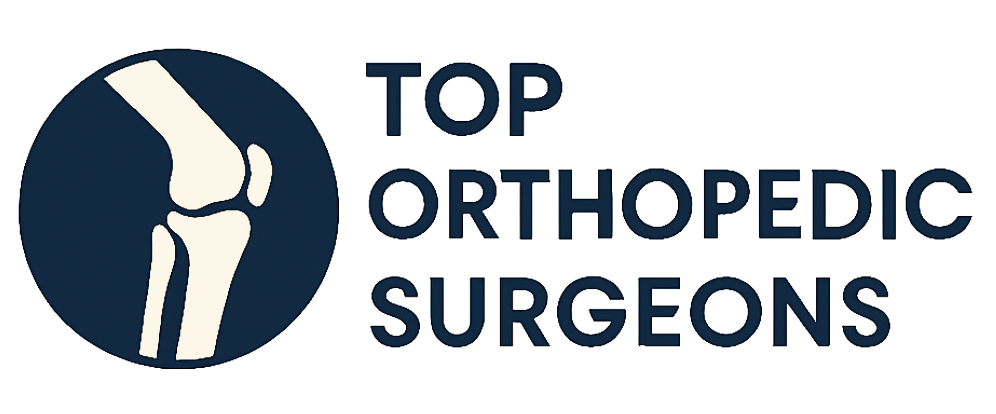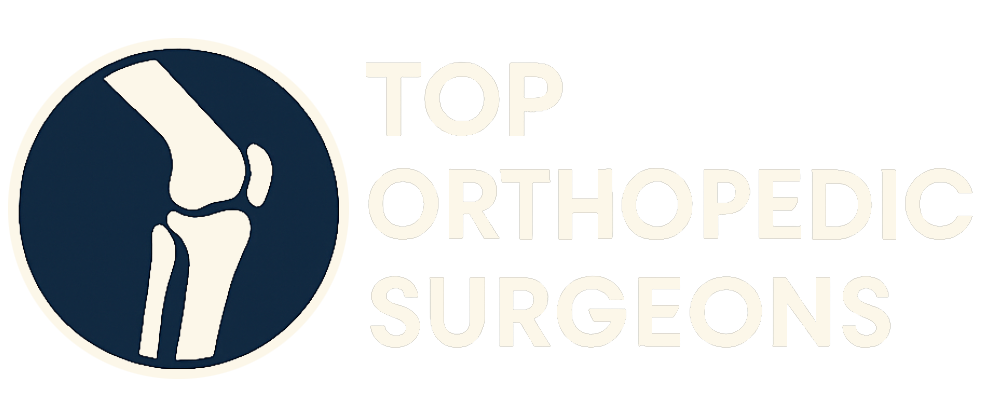
Choosing the right healthcare provider can feel overwhelming, especially when dealing with bone, joint, or muscle issues. Orthopedic care encompasses a wide range of specialties, each focusing on specific areas and conditions within the musculoskeletal system. Understanding these different orthopedic specialties is the first step toward receiving the most appropriate and effective treatment. This guide will help you navigate the landscape of orthopedic care and identify the specialist best suited to address your unique needs.
Understanding the Scope of Orthopedics
Orthopedics is a branch of medicine dedicated to the diagnosis, treatment, prevention, and rehabilitation of injuries and diseases of the musculoskeletal system. This system includes bones, joints, ligaments, tendons, muscles, and nerves. Orthopedic specialists, also known as orthopedic surgeons or orthopedists, possess extensive knowledge of this complex system and employ both surgical and non-surgical methods to improve patients’ quality of life. The breadth of orthopedics has led to the development of numerous subspecialties, each with its own area of expertise.
Common Orthopedic Specialties
Let’s explore some of the most common orthopedic specialties, providing you with a clearer understanding of what each entails:
Sports Medicine
Sports medicine orthopedic surgeons specialize in the prevention, diagnosis, and treatment of injuries related to athletic activities. They work with athletes of all levels, from recreational enthusiasts to professional players. These specialists have expertise in:
- ACL and meniscus tears: Common knee injuries resulting from sudden stops or changes in direction.
- Shoulder instability and rotator cuff injuries: Problems affecting the shoulder joint, often caused by overuse or trauma.
- Ankle sprains and fractures: Injuries sustained during running, jumping, or landing awkwardly.
- Concussions: Traumatic brain injuries that can occur in various sports.
- Overuse injuries: Conditions like tendinitis and stress fractures that develop gradually due to repetitive stress.
Sports medicine specialists often utilize arthroscopic surgery, a minimally invasive technique, to repair damaged tissues within joints. They also emphasize rehabilitation and injury prevention strategies to help athletes return to their activities safely.
Joint Replacement
Joint replacement surgeons focus on treating severe arthritis and other conditions that cause chronic joint pain and disability. They perform surgical procedures to replace damaged joints with artificial implants, most commonly in the:
- Hip: Total hip replacement is a highly effective procedure for relieving pain and restoring function in patients with hip arthritis.
- Knee: Total knee replacement is another common surgery that can significantly improve mobility and reduce pain for individuals with knee osteoarthritis.
- Shoulder: Shoulder replacement is an option for people with severe shoulder arthritis or rotator cuff arthropathy.
Joint replacement surgery can dramatically improve a patient’s quality of life by alleviating pain, increasing mobility, and restoring independence.
Spine Surgery
Spine surgeons specialize in the diagnosis and treatment of conditions affecting the spinal column. These conditions can cause back pain, neck pain, and nerve compression, leading to symptoms like sciatica or spinal stenosis. Spine surgeons address a variety of issues, including:
- Herniated discs: When the soft cushion between vertebrae bulges or ruptures, putting pressure on nearby nerves.
- Spinal stenosis: Narrowing of the spinal canal, which can compress the spinal cord and nerves.
- Scoliosis: A curvature of the spine that typically develops during adolescence.
- Spinal fractures: Injuries to the vertebrae caused by trauma or osteoporosis.
- Degenerative disc disease: Age-related changes in the spinal discs that can lead to pain and instability.
Spine surgeons may employ both surgical and non-surgical approaches to treatment, including physical therapy, injections, and surgical procedures such as spinal fusion and laminectomy.
Hand Surgery
Hand surgeons specialize in the diagnosis and treatment of conditions affecting the hand, wrist, and forearm. These conditions can range from common problems like carpal tunnel syndrome to complex injuries and deformities. Hand surgeons treat a wide variety of problems, including:
- Carpal tunnel syndrome: Compression of the median nerve in the wrist, causing pain, numbness, and tingling in the hand and fingers.
- Trigger finger: A condition in which a finger gets stuck in a bent position.
- De Quervain’s tenosynovitis: Inflammation of the tendons on the thumb side of the wrist.
- Fractures of the hand and wrist: Broken bones resulting from falls, sports injuries, or other trauma.
- Arthritis of the hand and wrist: Joint inflammation that can cause pain, stiffness, and limited range of motion.
Hand surgeons may use surgical or non-surgical methods, including splinting, therapy, and surgery, to restore hand function and relieve pain.
Foot and Ankle Surgery
Foot and ankle surgeons focus on the diagnosis and treatment of conditions affecting the foot and ankle. These conditions can range from common problems like bunions and hammertoes to complex injuries and deformities. Foot and ankle surgeons treat a variety of problems, including:
- Ankle sprains: Injuries to the ligaments that support the ankle joint.
- Fractures of the foot and ankle: Broken bones resulting from falls, sports injuries, or other trauma.
- Bunions: A bony bump that forms on the joint at the base of the big toe.
- Hammertoes: A deformity in which a toe bends abnormally.
- Plantar fasciitis: Inflammation of the plantar fascia, a thick band of tissue that runs along the bottom of the foot.
Foot and ankle surgeons employ both surgical and non-surgical approaches to treatment, including orthotics, physical therapy, and surgical procedures such as bunionectomy and ankle reconstruction.
Pediatric Orthopedics
Pediatric orthopedic surgeons specialize in the diagnosis and treatment of musculoskeletal conditions in children and adolescents. They have specialized knowledge of the growing skeleton and the unique orthopedic problems that can affect children. Pediatric orthopedic surgeons treat a variety of conditions, including:
- Scoliosis: A curvature of the spine that typically develops during adolescence.
- Clubfoot: A birth defect in which the foot is twisted inward and downward.
- Developmental dysplasia of the hip (DDH): A condition in which the hip joint does not develop properly.
- Limb length discrepancies: Differences in the length of the legs.
- Fractures and other injuries: Broken bones and other injuries sustained during childhood activities.
Pediatric orthopedic surgeons understand the importance of working closely with children and their families to provide comprehensive and compassionate care.
Orthopedic Oncology
Orthopedic oncologists specialize in the diagnosis and treatment of tumors of the bones and soft tissues. These tumors can be benign (non-cancerous) or malignant (cancerous). Orthopedic oncologists work closely with other specialists, such as medical oncologists and radiation oncologists, to develop comprehensive treatment plans for patients with orthopedic cancers. They treat conditions such as:
- Osteosarcoma: A type of bone cancer that most often affects adolescents and young adults.
- Ewing sarcoma: Another type of bone cancer that typically affects children and young adults.
- Chondrosarcoma: A type of cartilage cancer that most often affects adults.
- Soft tissue sarcomas: Cancers that develop in the soft tissues of the body, such as muscles, fat, and nerves.
Orthopedic Trauma
Orthopedic trauma surgeons specialize in the treatment of fractures, dislocations, and other injuries to the musculoskeletal system caused by trauma. They typically work in hospital settings and treat patients who have been injured in accidents, falls, or other traumatic events. Orthopedic trauma surgeons treat a wide range of injuries, including:
- Fractures of the long bones: Broken bones in the arms and legs.
- Pelvic fractures: Fractures of the pelvis, which can be life-threatening.
- Spinal fractures: Fractures of the vertebrae.
- Joint dislocations: Injuries in which the bones of a joint are displaced.
- Soft tissue injuries: Injuries to muscles, ligaments, and tendons.
Choosing the Right Specialist
Selecting the appropriate orthopedic specialist is crucial for receiving the best possible care. Consider these factors when making your decision:
- Your specific condition: Determine the area of your body affected and the nature of your problem. This will help you narrow down the list of potential specialists.
- The specialist’s expertise: Look for a board-certified orthopedic surgeon with specific training and experience in treating your condition.
- The specialist’s approach to treatment: Discuss your treatment options with the specialist and ensure you understand the risks and benefits of each approach.
- Your comfort level: Choose a specialist with whom you feel comfortable communicating and who is responsive to your questions and concerns.
Don’t hesitate to seek a second opinion if you are unsure about a diagnosis or treatment plan. Obtaining multiple perspectives can help you make informed decisions about your healthcare.
Empowering Your Orthopedic Journey
Navigating the world of orthopedic care can be complex, but understanding the different specialties and considering your individual needs will empower you to make the right choices for your health. Remember to research your options, ask questions, and advocate for your own well-being throughout the process. By taking an active role in your orthopedic care, you can increase your chances of a successful outcome and a return to a pain-free, active lifestyle.


